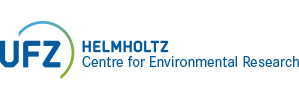Publication Details |
| Category | Text Publication |
| Reference Category | Journals |
| DOI | 10.1016/j.ecolmodel.2025.111029 |
Licence  |
|
| Title (Primary) | Model perpetuation by designing and documenting models and workflows so that they can be reused and further developed by others: The case of multiple stressors in ecology |
| Author | Meier, L.; Grimm, V.; Frank, K.
|
| Source Titel | Ecological Modelling |
| Year | 2025 |
| Department | OESA; iDiv |
| Volume | 501 |
| Page From | art. 111029 |
| Language | englisch |
| Topic | T5 Future Landscapes |
| Supplements | https://ars.els-cdn.com/content/image/1-s2.0-S0304380025000122-mmc1.docx |
| Keywords | Workflows; Modelling; Model perpetuation; Reuse of models; Standardization; Stressors |
| Abstract | For model development and use, there are recommendations for documenting the model itself, the simulation experiments, or the whole modelling process in general, all of which contribute to good modelling practice (GMP). However, it remains a challenge to prepare models for their perpetuation, so that both the original developers and others can run them for new scenarios or develop the model further. As a result, despite the often considerable effort that goes into developing a model, it is not used any more as soon as the developers no longer have the resources to do so. We therefore present recommendations for Model Perpetuation, referred to as DOSE, which consists of four components: How to (1) Design, (2) Operationalize scenarios, (3) Simulate and (4) Evaluate. We focus on models that represent the effects and interactions of multiple stressors, as this type of model is becoming increasingly important in ecology and elsewhere. Our recommendations are based on the development of our mechanistic model of riverine ecosystems, MASTIFF. DOSE is intended as a checklist to facilitate Model Perpetuation and can therefore contribute to the development of a more comprehensive GMP. DOSE has the potential to increase the return on investment in model development. It can facilitate community model development, thereby broadening the scope of models and providing a much-needed stronger focus on multiple stressors. DOSE could be the first step towards a standardized approach to ensuring Model Perpetuation. |
| Persistent UFZ Identifier | https://www.ufz.de/index.php?en=20939&ufzPublicationIdentifier=30383 |
| Meier, L., Grimm, V., Frank, K. (2025): Model perpetuation by designing and documenting models and workflows so that they can be reused and further developed by others: The case of multiple stressors in ecology Ecol. Model. 501 , art. 111029 10.1016/j.ecolmodel.2025.111029 |
|
